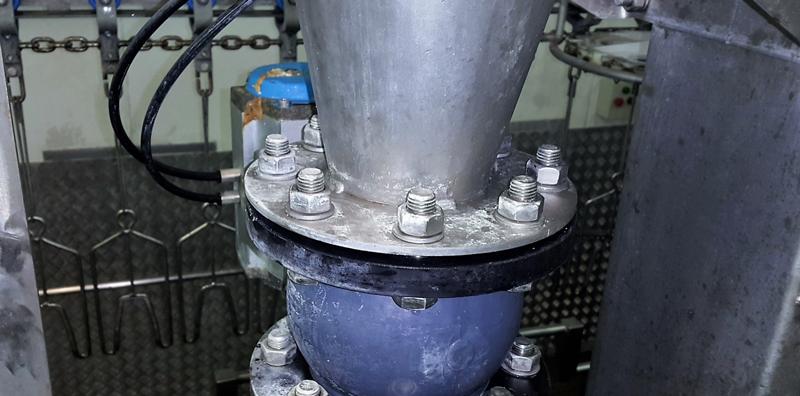Dry Ice Blasting is a ground-breaking, non-toxic, non-abrasive cleaning method that produces zero secondary waste (e.g. sand/glass, dirty water, dirty cloths and chemical containers), says provider Presco Environmental. Dry ice pellets (made of CO2) replace traditional blasting materials such as steam, water and chemicals, and vaporize immediately on contact with the surface being cleaned. Only the soil that has been dislodged remains to be disposed of. The process is, reckons Presco, the future of cleaning.
Dry ice is the solid form of recycled carbon dioxide (a natural part of the atmosphere). At atmospheric pressure, dry ice is -78˚C. It is odour-free, non-toxic, and incombustible.
Dry ice has a great benefit over traditional ice. When dry ice melts, it goes through a process called Sublimation. Sublimation is the transformation from solid state to gas state without going to a liquid state. This means that dry ice does not produce liquid, where regular ice would produce water. When dry ice melts, it merely turns in to a gas and disappears. This is where dry ice gets its name… when it melts, it is dry.
The very low temperature, -78˚C, means dry ice cleaning has a sanitising effect on the surfaces being cleaned. Allergen contamination is eliminated, surfaces are sterilised and mould and bacteria growth is inhibited.
Dry ice blasting is recognized as an environmentally responsible cleaning process because it doesn’t produce any hazardous, secondary waste. Dry ice is made from Carbon Dioxide (CO2) that would normally have been released into the atmosphere. It gives CO2 emissions a “second life” in performing a cleaning task before being finally released. Dry ice blasting has no ozone depleting potential.
Most other blast media leave secondary waste behind. Dry ice sublimates (vaporizes) upon impact with the surface. All that remains is the contaminant you are removing, displaced from the substrate. Also, since dry ice vaporizes on impact, the process can be used to clean complicated cavities where typical grit blast media will become trapped.
The dry ice blasting process will not damage the substrate. The size of the dry ice pellets and their velocity can be optimized to remove the contaminant while remaining non-abrasive to the substrate. The process can clean delicate chrome or nickel plated tools, soft aluminum or brass alloys, wire insulation and even circuit boards – all without causing damage.
PRESCO ENVIRONMENTAL SERVICES
0800 PRESCO (773726)
Dry ice cleaning is suitable for most industries including:
- Aviation
- Automotive
- Building and historical restoration
- Electrical
- Fire restoration
- Food processing
- Foundry
- Marine
- Mould remediation
- Nuclear
- Oil and gas
- Printing and paper
- Plastic and rubber
- Turbine and power generation



